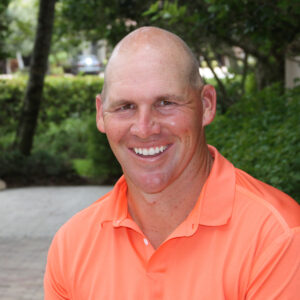So, you have to practice those kinds of situational shots rather than a shot, just like a serve.
It seems to me that still people haven’t caught up on this. After all these years, you see kids getting a lot of balls and go on a tennis court and pound serves for like 20 minutes. Sometimes I can’t help myself and I walk in and I look at the kid and I say: “So what serve are ou practicing?”
They might answer: “My first serve.”
I respond: “Which first serve?
The kid goes “My first serve”
I go: “Which?”
”Oh, you mean flat or slice?”
“No, I mean which first serve. Is it the 40-0 serve the 30-30 all first serve or the 15-40 first serve -which first serve? So, it takes the kids a while to figure this out that every single first serve is a different first serve.
So, when you are practicing the first serve you always need to know which first serve you are practicing.
You want to practice in situations so that when you’re in a match, you’ve already hit that second serve 15-30 100 times in a practice. You’ve already simulated that 15-30 feeling or that 30-30 or 40-0 feeling. And then, of course, that grips with the philosophy of those lights, the yellow points that you probably saw it in the book and the green points, and the red points is a very simple analogy
When I directed the Nike Camps nobody ever served a bucket of balls. When it was time to serve the kids were playing games against themselves. So, you have a target put in 1 the corners of the box. E.g. the 2 corners of the box have a target. Now you have yourself basically three targets. You have the target out wide, the down the T, and then you have the body target in between the target.
So, 1 drill that can help you to get more confident on your serve is to serve, e.g. a game against yourself. You can go ahead and extend that into a whole set. You can play 6 games if you like to. The idea is, if it’s 0-0, what kind of first serve do you open up with in the game? Are you going to go for a bomb and already have the chance that you missed the first serve and now you’ve got to open up your service game with a 2nd serve that allows your opponent to jump on it and become aggressive against you right off the bat, possibly putting you already in a hole at 0-15?
Most of the time the correct serve to serve at 0-0 at the first point of the game is obviously a three quarter first serve that gets in there. It doesn’t have to be a bomb or the biggest first serve you have ever put in, but make sure that you increase your chances of starting that first point with your first serve so that the opponent is not aggressive. Because when we return first serves, we are reacting.
When we miss the first serve, the opponent become aggressive. So, you don’t want to allow that player to become aggressive right off the bat on a 0-0 point.
Then the serving drill progresses from there. So, the drill goes that if you then try a three quarters serve, to the backhand and you miss the target, but made it in the box then it doesn’t count. Now, you got to put a 2nd serve in there and then you have to call the 2nd serve. E.g. I’m going to the backhand. You get the 2nd serve in to the backhand and it’s 15-0. If you on the other hand don’t get your 2nd serve into the backhand corner. Then it’s 0-15 and then you got to figure out what 1st serve to now come up with at 0-15. put that 1st serve now. If you didn’t start with a bomb at 0-0 then much less now you want to go for a bomb on the 1st serve. now you’re still going to work on your three quarter 1st serve so that you can get back into 15-15.
Then of course, if you get to a 40-15, then go for a bomb and go for the ace. So, let the players work with scores and targets, but understanding which serve, they actually have to hit for each particular situation in order for them to get confidence on how to hold serve easier as the match progresses. At the end of the day, the basic strategy of the game is protect your serve and go for 1 break because that’s our bottom line.
If we can do that then we are going to win the sets 6-4 or 6-3. So, we need to help players understand how they protect their serve and how they hold their serve. Serving smarter over serving harder.
Pancho Gonzalez in the past was a great example of this. He used to be the guy that hit the biggest serve of all times. Players in the 60s used to be afraid of Pancho’s 1st serve. Oddly enough, he was interviewed 1 time. I read that interview and they said: “Pancho, you’re 1st serve is so intimidating. You’re hitting it at 130 miles an hour. How can you do that day in, day out?
He says, I don’t. I do just a couple 130 miles an hour. The rest of them, they think that I’m popping them at 130, but I’m not. I’m just serving smart and holding easy. So Pacho knew that there was more than purely serving hard going into holding serve.. But talking about the serve, I think one important point that you probably read in the book is that I believe that the most important shot of our game in people do not.


